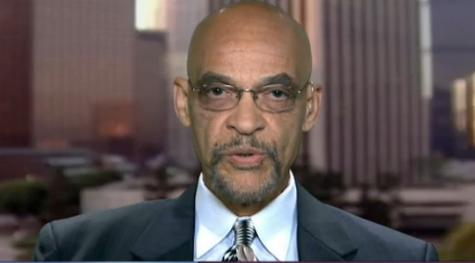Earl Ofari Hutchinson
No Need to vilify NYPD Staten Island commander Christopher Bannon for his blunt and honest quip of “not a big deal” when he got word of Eric Garner’s death from a chokehold by NYPD officer Daniel Pantaleo in July 2014. Garner was stopped, bum rushed to the ground and choked by Pantaleo during his arrest of Garner. Pantaleo was not indicted and years later an attempt to bring civil rights charges against him has gone and is seemingly going nowhere.
Bannon’s candid response to the Garner’s slaying came out years later only because Pantaleo is being brought up on disciplinary charges by NYPD officials. Predictably, there will be no charges against Bannon for his indiscreet crack. His “not a big deal” in future times may well rank right up there with Garner’s shout caught on video and viraled to millions of “I can’t breathe” when being arm locked by Pantaleo as emblematic of the cheapness of black lives. In truth, it should top Garner’s helpless plea as the standard for how far too many within and without a police uniform view black lives such as Garner’s.
The legal and social footprint on these slayings has by now been well established. It goes like this. Pantaleo was not charged in the Garner killing and remains on the force. He’s no different than legions of other officers who have recklessly used deadly force and skipped away with no charges. Even in the rarest of rare cases, when cops who kill such as Pantaleo are charged, they are almost always quickly acquitted of the charges or they are dismissed.
Then there’s the inevitable character assassination of the victim. Police officials hold press conferences, leak documents, and orchestrate a well-oiled press campaign to depict men such as Garner as having a criminal record, a deadbeat dad, and any other kind of deviant behavior they can smear the victim with. The brutal inference is that he is a bad guy who got what he deserved.
They get away with this by anchoring it on the ancient, shop worn, but serviceable litany of stereotypes and negative typecasting of young black males. It’s the shortest of short steps to think that if Garner could be depicted as a caricature of the terrifying image that much of the public still harbors about young, and so young, black males, then that image seems real, even more terrifying, and the consequences are just as deadly.
There have been countless studies, surveys, and just plain candid admissions from many that they still cringe with terror in the presence of black males. In fact, many of the old stereotypes about poverty and crime and blacks remain just as frozen in time. Much of the public still perceives those most likely to commit crimes as poor, jobless and black. Race and poverty and crime are firmly etched together in the public mind. Once the stereotype is planted, it’s virtually impossible to root out.
In 2003 and 2008, Penn State University researchers found that many whites are likely to associate pictures of blacks with violent crime. This was no surprise given the relentless media depictions of young blacks as dysfunctional, dope-peddling, gang bangers and drive-by shooters. The Penn State study found that even when blacks didn’t commit a specific crime; whites still misidentified the perpetrator as an African American. Immediately after the election of former President Obama in 2008, the researchers still found public attitudes on crime and race unchanged. Many whites still overwhelmingly fingered blacks as the most likely to commit crimes, even when they didn’t commit them.
The gunning down of unarmed young blacks is not the only lethal consequence of this warped public perception of black males. A Stanford study released days before Garner’s killing found that a significant number of whites and non-whites were even more willing to cheer tough sentencing, three strikes laws, and draconian drug busts, when they perceive that the majority of those busted and imprisoned are black.
This has had yet another horrific consequence. That is what some have now call the “normalizing” of police violence against unarmed blacks. By normalizing is meant that when blacks are slain no matter how outrageous the circumstances, it is one day in and one day out in the news. There may be a few brief and scattered protests, followed by promises by police officials to investigate, and the officer placed on administrative leave for a cooling off period. Then It’s back to business as usual. The officers are quietly returned to duty. There may be a settlement with the victim’s family. But that’s it. This pattern is now repeated so often that it’s become the template for how police overuse of deadly force cases is handled and then quickly disposed of.
The Garner slaying along with that of Michael Brown in Ferguson, Missouri gave rise to an aroused black lives matter movement for a while. But this has done little to alter the template of how the slaying of Garner and others are handled. Worse, it has done absolutely nothing to change the view that their slayings are not a big deal.
Earl Ofari Hutchinson is an author and political analyst. He is the author of Why Black Lives Do Matter (Middle Passage Press). He is a weekly co-host of the Al Sharpton Show on Radio One. He is the host of the weekly Hutchinson Report on KPFK 90.7 FM Los Angeles and the Pacifica Network.

